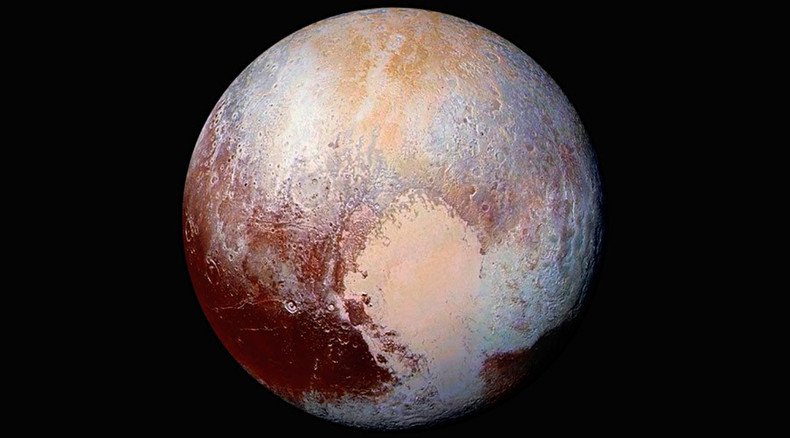NASA reveals first official findings of Pluto mission

It was meant to send back answers, but the New Horizons space probe flyby of Pluto is rather inciting more questions about the dwarf planet. But scientists are no less delighted, saying the findings document geological formations never before conceived.
"We just have this wonderful first look that says the Pluto system is remarkable,” Hal Weaver, project scientist for New Horizons, told The Washington Post.
Amazing video shows journey to Pluto through lens of #NASA's New Horizons spacecraft http://t.co/ii6ImodhDNpic.twitter.com/sESpBCoMmc
— RT America (@RT_America) August 19, 2015The New Horizons spacecraft launched in January 2006. More than nine years passed before it went as close as 7,750 miles to Pluto and as far as 3.1 billion miles from Earth. What New Horizons has managed to send back, in the four hours and 25 minutes it took for data to reach Earth, reveals a very different Pluto from that which was expected.
Cold and distant, but with “a big surprise”
Being so far away from the sun, Pluto might be thought of as cold and distant. But new, awe-inspiring images are warming scientists, some of whom previously imagined nothing more than a crater or scar-ridden surface with little else to show for its formation.
"How can these small, cold objects be so diverse? What's driving what seems to be tectonic activity on the surface, these glacier flows, these incredibly complicated regions on the surface that just look like a jumbled mess of giant, icy mountains? The variety of the surface features has been a big surprise," Weaver said to the Post.
'More dragon scales than geology': Pluto like we've never seen it before (PHOTOS) http://t.co/CCDv3h4vg6pic.twitter.com/Ymdb2IaHD8
— RT America (@RT_America) September 26, 2015Though water ice has been found on Pluto, its glaciers and mountains are made of other ices, such as nitrogen. A serene ice lake of nitrogen called Sputnik Planum is thought to include a thin layer of water ice over methane ice. The movement of glaciers in the northern part of the lake may be due to nitrogen flowing like groundwater does here on the blue marble we call home.
Why is the sky blue?
New Horizons gave us more than a look at the surface of Pluto. Scientists were also interested in Pluto's atmosphere and the rate at which particles escape the globe’s weak gravitational pull. Pluto’s sky was revealed to be a familiar color, caused by red or gray particles which reflect a blue haze when touched by sunlight. The sun’s impact on the particles creates what are called tholins. When those tholins break up, they fall to the surface, leaving a red stain on the dwarf planet. Water ice also appears bright red, and this relationship remains a mystery.
‘Scientific bonanza’: New NASA images reveal Pluto’s giant ice mountains, hazy world http://t.co/CrwhTrB7S5pic.twitter.com/CtEDgmWevc
— RT America (@RT_America) September 18, 2015“I’m surprised that this water ice is so red,” said Silvia Protopapa, a co-author of the NASA report and astronomer at the University of Maryland, College Park, in a statement. “We don’t yet understand the relationship between water ice and the reddish tholin colorants on Pluto's surface.”
Face to face
Pluto never averts its gaze from the largest of its five moons, Charon, another one of the targets of the New Horizons mission. Though Charon is half the size of Pluto, it’s the largest satellite of any planet in terms of proportion. Charon and Pluto always have the same sides facing one another as they orbit, almost as if they were binary planets. And Charon offers similar views on its surface, too.
What flying over Pluto's moon Charon would look like (VIDEO) http://t.co/0oVrnmbHPApic.twitter.com/eN72qYN6IE
— RT America (@RT_America) October 3, 2015Pluto’s other moons have wilder orbits, even wilder than first perceived by scientists who are still learning the basics of this corner of the Solar System. The smaller moons don’t show just one side to Pluto like most other planetary satellites do, and they are most likely offset by Charon’s gravity.
The Plutonian system is scientifically fundamental to understanding how our own planet and moon came into form. New Horizons is expected to run through 2026 or even beyond, undoubtedly creating further questions about and appreciation for the unexplored.












